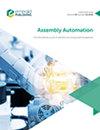工业过程中具有未知输入时滞的MIMO非线性系统基于MTN的递推d-stepahead预测控制
IF 1.7
4区 计算机科学
Q3 AUTOMATION & CONTROL SYSTEMS
引用次数: 0
摘要
目的本文旨在为工业过程中具有未知输入时滞的多输入多输出“MIMO”非线性系统提供一种精确的跟踪控制方案。设计/方法论/方法提出了一种基于多维泰勒网络(MTN)模型的预测控制方案。首先,对于未知的输入时延,使用互相关函数仅通过输入和输出数据来识别输入时延。然后,设计了基于MTN模型的预测控制方案。具体如下:建立了一个递推d阶MTN预测模型来补偿时延的影响,并应用扩展卡尔曼滤波器(EKF)算法对其进行学习;设计了多步预测目标函数,并通过迭代精化确定了最优控制输出;并证明了MTN预测模型的收敛性和闭环系统的稳定性。仿真结果表明,该方案具有良好的通用性,能够有效地对工业过程中具有未知输入时滞的MIMO非线性系统进行跟踪控制,如连续搅拌釜反应器(CSTR)过程,大大提高了系统的性能和有效性。该方案具有较强的鲁棒性、较低的复杂度和易于实现的特点。研究局限性/含义对于所提出方案的局限性,仅在时滞辨识和控制方案中考虑了时不变时滞。而CSTR过程的引入只是为了证明所提出的方案能够适应实际的工业场景。独创性/价值本文的独创性在于,所提出的MTN控制方案具有良好的跟踪性能,解决了输入时延未知的MIMO非线性系统受时延、耦合和非线性的影响以及实时性。本文章由计算机程序翻译,如有差异,请以英文原文为准。
MTN-based recursive d-step-ahead predictive control of MIMO nonlinear systems with unknown input time-delay in industrial process
Purpose
This paper aims to provide a precise tracking control scheme for multi-input multi-output “MIMO” nonlinear systems with unknown input time-delay in industrial process.
Design/methodology/approach
The predictive control scheme based on multi-dimensional Taylor network (MTN) model is proposed. First, for the unknown input time-delay, the cross-correlation function is used to identify the input time-delay through just the input and output data. And then, the scheme of predictive control is designed based on the MTN model. It goes as follows: a recursive d-step-ahead MTN predictive model is developed to compensate the influence of time-delay, and the extended Kalman filter (EKF) algorithm is applied for its learning; the multistep predictive objective function is designed, and the optimal controlled output is determined by iterative refinement; and the convergence of MTN predictive model and the stability of closed-loop system are proved.
Findings
Simulation results show that the proposed scheme is of desirable generality and capable of performing the tracking control for MIMO nonlinear systems with unknown input time-delay in industrial process effectively, such as the continuous stirred tank reactor (CSTR) process, which provides a considerably improved performance and effectiveness. The proposed scheme promises strong robustness, low complexity and easy implementation.
Research limitations/implications
For the limitations of proposed scheme, the time-invariant time-delay is only considered in time-delay identification and control schemes. And the CSTR process is only introduced to prove that the proposed scheme can adapt to practical industrial scenario.
Originality/value
The originality of the paper is that the proposed MTN control scheme has good tracking performance, which solves the influence of time-delay, coupling and nonlinearity and the real-time performance for MIMO nonlinear systems with unknown input time-delay.
求助全文
通过发布文献求助,成功后即可免费获取论文全文。
去求助
来源期刊

Assembly Automation
工程技术-工程:制造
CiteScore
4.30
自引率
14.30%
发文量
51
审稿时长
3.3 months
期刊介绍:
Assembly Automation publishes peer reviewed research articles, technology reviews and specially commissioned case studies. Each issue includes high quality content covering all aspects of assembly technology and automation, and reflecting the most interesting and strategically important research and development activities from around the world. Because of this, readers can stay at the very forefront of industry developments.
All research articles undergo rigorous double-blind peer review, and the journal’s policy of not publishing work that has only been tested in simulation means that only the very best and most practical research articles are included. This ensures that the material that is published has real relevance and value for commercial manufacturing and research organizations.
 求助内容:
求助内容: 应助结果提醒方式:
应助结果提醒方式:


